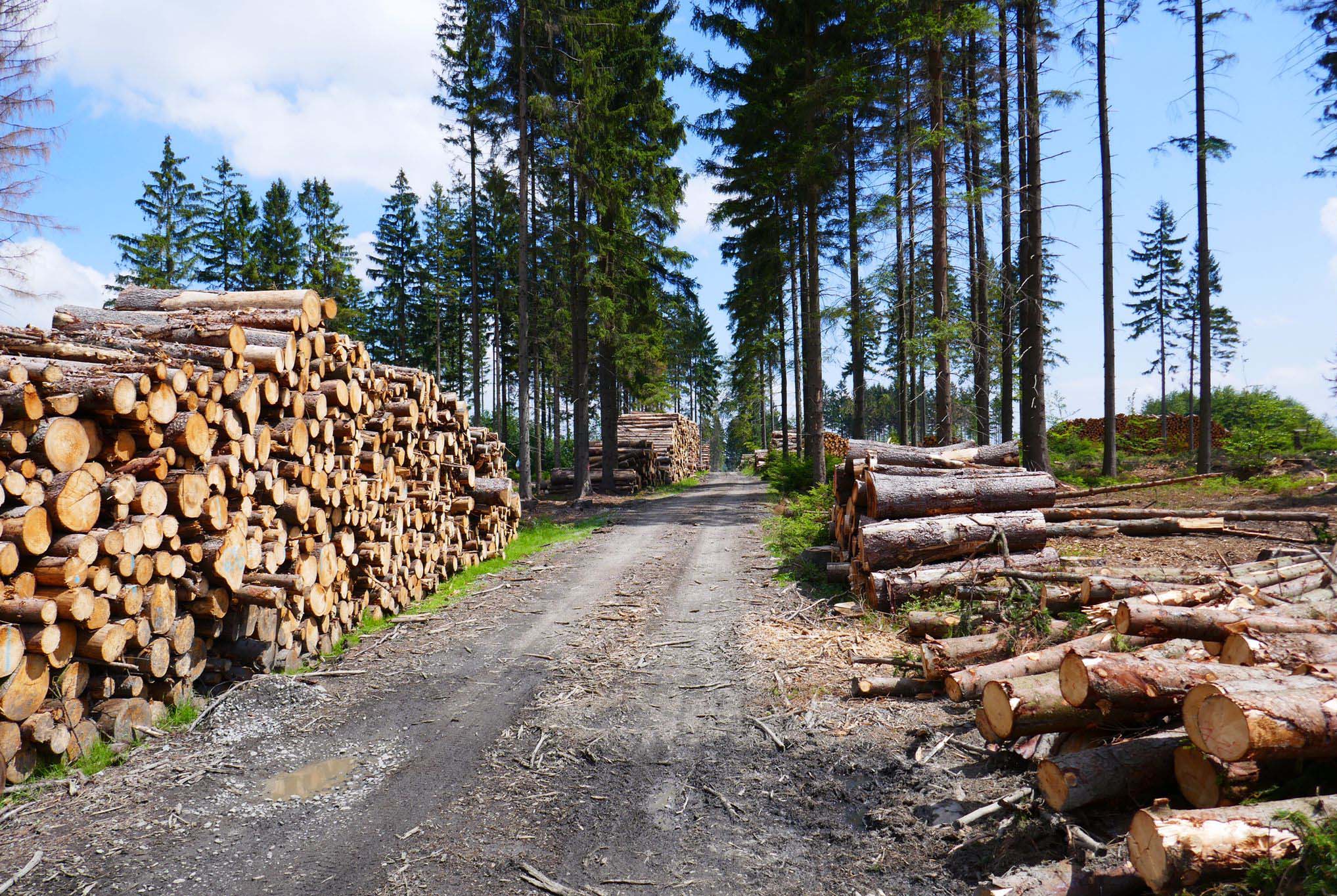Outbreaks of bark beetles have devastated vast swaths of forests across Europe, flooding media headlines and concerning forest owners, managers, policy-makers, and the public. The outbreaks affected many countries such as Czech Republic, Poland, Austria, Germany, Sweden, or France and challenged not only forest management but entire societies. The unprecedented areas of dead and often salvaged trees dramatically changed historically forested environments and compromised landscape cultural values. Heavy logging and transportation of dead trees and consequent impacts on the timber market further aggravated the effects on people and the environment.
In the wake of these developments, several European states requested the European Forest Institute (EFI) in 2017 for a report informing about the reasons, consequences, and prospects of these notable outbreaks. Aim of the report – which was collaboratively prepared by eleven scientists from Europe and the US – was also to explore proper management and policy responses. When introducing the report at the ThinkForest forum in Prague in April 2019, the authors were already well aware of aspects that deserve greater attention. They also recognized the need to provide the scientific community with a state-of-the-art publication on bark beetles reflecting on changing ecosystem dynamics, emerging societal expectations and different governance concepts. These ideas have materialized now by publishing a paper on ‘Bark beetle outbreaks in Europe: State of knowledge and ways forward for management’. In this blog post, I will focus on the management and policy aspects of the paper, while summarizing the main messages, and explaining some of our motivations.
Context-dependency instead of uniformity
Integrating pest management, silviculture and non-intervention
The situation is different when it comes to actively managed production forests. Here a keyword of the proposed strategy is ‘complexity’. We argued against management tactics overly relying on the direct control of beetle`s populations via search and removal of infested trees, beetle trapping, and other procedures that dominate present-day management. We reasoned mainly by these approaches’ unknown efficiency and economic performance, potentially adverse effects on ecosystem recovery, and problematic use of these measures in outbreaks fuelled by climate change. Instead, we advocated a holistic approach combining silviculture, monitoring, sanitation, and non-intervention. For example, while present-day silviculture mainly fosters forest productivity, we suggest shifting the focus to reducing forest vulnerability, fostering resilience and climate-adaptedness. Creating diverse, well-structured, and climate-adapted forests is a key premise for managing future outbreaks. The proposed strategy also suggests revising our approach to non-intervention in production forests. This has been a no-go area for a long time, mainly because of the fear of outbreak expansion and the loss of commercial value of dead trees. However, considering factors such as increasing outbreak size, limited human and logistic resources, the different value of forest stands at risk, and actual market conditions may turn non-intervention to be the best option under some circumstances. Such a decision, however, needs to be supported by advanced spatial planning and optimization tools. Developing such tools seems to be a timely task for the scientific community.
Challenges of multifunctional forests – from advanced spatial planning to compensation for forest owners
While the situation is more or less clear when it comes to bark beetle management in the previous two forest categories, it is challenging to blend these principles to address outbreaks in multifunctional forests. We suggested several roles balancing the ecological role of bark beetles with the provision of ecosystem services valued by people. To name a few, the spatial scale of multifunctional forest management may need to be reconsidered. Achieving multifunctionality at the stand scale may be nearly impossible in the face of large-scale drivers such as bark beetle outbreaks. Instead, wood production can be emphasized in fertile low-risk sites, supported by active disturbance control, while natural disturbance dynamics can be allowed in other landscape parts. Such decisions again need to be supported by advanced spatial planning tools. Facilitating outbreak management in multifunctional forests also requires well-targeted incentives to compensate forest owners for (i) potential losses of marketable ecosystem services due to bark beetles, and (ii) losses due to management restrictions resulting from disturbances.
Integrating ecological and social perspectives
We placed all the above principles into a comprehensive social framework. For example, the adoption of new management concepts requires revised education and training programs. Intensifying disturbance regimes requires transnational coordinated monitoring and planning tools as well as harmonized sectoral policies, such as environment, finance, and transportation. Involving the public into management decisions and maintaining trustful relations with local residents is vital for reaching public acceptance and supporting management actions. The latter field is particularly underdeveloped in Europe. Yet, the experience with outbreaks in the Białowieża Forest, the Bavarian Forest, or the High Tatras highlights the importance of considering the social dimension in disturbance management.
Finally, managing future outbreaks or, broadly speaking, natural disturbances requires institutional and governance developments. While actions such as improved education and monitoring, coordination of forest owners, and cross-sectoral policies require centralized actions, the practical management requires decentralized decisions, while flexibly addressing local social, ecological, and market conditions. These facts markedly differ from the current institutional frameworks and highlight the need for a paradigmatic shift in disturbance management rather than mere modification of past practices. Achieving this goal is a challenging yet crucial step towards managing resilient European forests for the future.
Recommended reading
Hlásny, T., König, L., Krokene, P., Lindner, M., Montagné-Huck, C., Müller, J., Qin, H., Raffa, K., Schelhaas, M-J., Svoboda, M., Viiri, H., Seidl, R. 2021. Bark Beetle Outbreaks in Europe: State of Knowledge and Ways Forward for Management. Current Forestry Reports, doi:10.1007/s40725-021-00142-x
Hlásny, T., Krokene, P., Liebhold, A., Montagné-Huck, C., Müller, J., Qin, H., Raffa, K., Schelhaas, M-J., Seidl, R., Svoboda, M., Viiri, H. 2019. Living with bark beetles: impacts, outlook and management options. From Science to Policy 8. European Forest Institute.
Photos by Tomáš Hlásny.
Published in Forest Resilience and Uncategorized.


